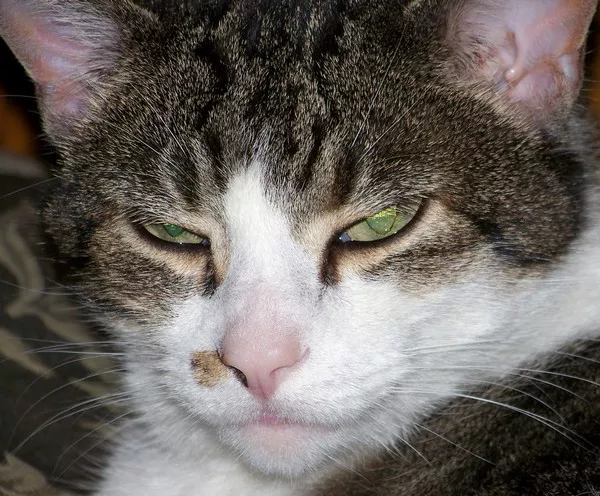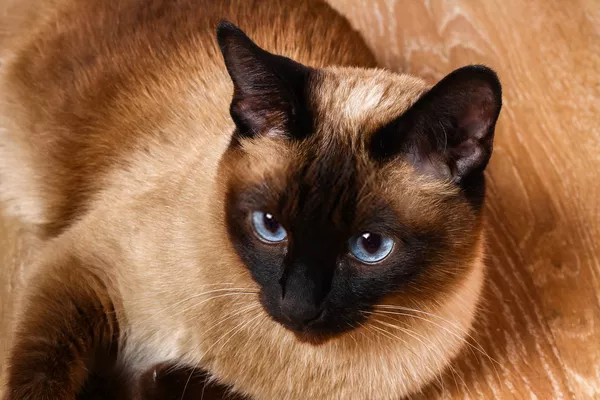A cat‘s nose is an essential sensory organ that helps them navigate the world around them. Just like humans, cats can develop nasal discharge or crustiness, which may require cleaning to maintain their health and comfort. In this article, we’ll explore the best practices for cleaning a cat’s nose, including when and how to do it safely.
Understanding Cat Nasal Health:
Before attempting to clean your cat’s nose, it’s essential to understand what constitutes normal and abnormal nasal health in cats. A healthy cat’s nose should be moist and free of discharge, with no signs of crustiness, swelling, or inflammation. If you notice any changes in your cat’s nasal appearance or behavior, such as sneezing, pawing at the nose, or difficulty breathing, it may indicate an underlying issue that requires veterinary attention.
Causes of Nasal Discharge: Nasal discharge in cats can have various causes, including viral or bacterial infections, allergies, foreign objects lodged in the nose, dental problems, or underlying health conditions such as respiratory infections or nasal tumors. Identifying the underlying cause of nasal discharge is crucial for determining the appropriate treatment and management plan.
When to Clean: In some cases, mild nasal discharge or crustiness may resolve on its own without intervention. However, if the discharge persists or worsens, or if your cat is showing signs of discomfort or illness, it may be necessary to clean their nose to remove any accumulated debris or mucus. Always consult with your veterinarian before attempting to clean your cat’s nose, especially if you suspect an underlying health issue.
Preparing to Clean Your Cat’s Nose:
Before attempting to clean your cat’s nose, gather the necessary supplies and prepare a calm and comfortable environment to minimize stress for both you and your cat. You will need:
Warm Water: Use lukewarm water to moisten a clean cotton ball or soft cloth for gentle cleaning.
Saline Solution: A saline solution made from non-iodized salt and sterile water can help loosen stubborn nasal discharge and provide gentle cleansing.
Towel or Blanket: Use a towel or blanket to secure your cat and protect yourself from scratches if they become agitated during the cleaning process.
Treats or Rewards: Have some tasty treats or rewards on hand to reward your cat for cooperating during the cleaning process.
Once you have gathered your supplies, find a quiet and comfortable area where you can safely and securely clean your cat’s nose without distractions or interruptions.
Steps for Cleaning Your Cat’s Nose:
Cleaning your cat’s nose requires patience, gentleness, and a calm approach to minimize stress for your feline companion. Follow these steps to safely and effectively clean your cat’s nose:
Restraint: If your cat is not accustomed to having their nose cleaned, you may need to gently restrain them to prevent them from fleeing or resisting. Wrap your cat securely in a towel or blanket, leaving only their head exposed. Be sure to provide ample support and comfort to reassure your cat during the process.
Moisten the Cloth: Dip a clean cotton ball or soft cloth in lukewarm water or saline solution and gently wring out any excess moisture. The cloth should be damp but not dripping wet to avoid causing discomfort or irritation to your cat’s nose.
Gently Wipe the Nose: With your cat securely restrained, gently wipe the damp cloth or cotton ball along the surface of your cat’s nose, applying light pressure to remove any accumulated debris or crustiness. Avoid inserting anything into your cat’s nostrils or applying excessive force, as this can cause discomfort or injury.
Repeat as Needed: Continue gently wiping your cat’s nose with the damp cloth or cotton ball until it appears clean and free of discharge. You may need to use multiple cotton balls or cloths if the discharge is particularly stubborn or if your cat has a large amount of debris.
Offer Rewards: Throughout the cleaning process, offer your cat treats or rewards to reinforce positive behavior and provide a distraction from any discomfort or anxiety they may be experiencing. Praise your cat for cooperating and remain calm and patient throughout the process.
Post-Cleaning Care:
After cleaning your cat’s nose, allow them some time to recover and relax in a quiet and comfortable environment. Monitor your cat for any signs of discomfort or distress, such as sneezing, coughing, or increased nasal discharge, which may indicate a need for further veterinary evaluation.
Hygiene: Dispose of any used cotton balls or cloths and wash your hands thoroughly to prevent the spread of germs or bacteria. Clean and disinfect any surfaces or equipment used during the cleaning process to maintain a hygienic environment for your cat.
Follow-Up: If your cat’s nasal discharge persists or worsens despite cleaning, or if you notice any other concerning symptoms, such as lethargy or loss of appetite, it’s essential to follow up with your veterinarian for further evaluation and treatment. Your veterinarian can help identify the underlying cause of your cat’s nasal issues and recommend appropriate treatment options.
Preventing Nasal Issues in Cats:
While occasional nasal discharge may be normal for cats, there are steps you can take to help prevent nasal issues and maintain your cat’s nasal health:
Regular Veterinary Care: Schedule regular wellness exams for your cat to monitor their overall health and address any potential health concerns before they escalate. Your veterinarian can provide guidance on preventive care measures and recommend appropriate vaccinations and parasite control.
Diet and Nutrition: Feed your cat a balanced and nutritious diet tailored to their age, activity level, and health needs. Proper nutrition is essential for supporting your cat’s immune system and overall well-being, reducing their risk of developing respiratory infections or other health issues.
Environmental Enrichment: Provide your cat with a stimulating and enriching environment that encourages physical and mental activity. Interactive toys, scratching posts, and vertical spaces for climbing can help keep your cat entertained and mentally stimulated, reducing their stress levels and boosting their immune system.
Hygiene and Cleanliness: Keep your cat’s living environment clean and free of potential allergens, toxins, or irritants that could contribute to nasal issues. Regularly clean and disinfect your cat’s litter box, bedding, and food and water bowls to minimize exposure to bacteria and allergens.
See Also: 5 Common Cat Teeth Cleaning Tools
Conclusion:
Cleaning your cat’s nose may be necessary if they develop nasal discharge or crustiness due to underlying health issues or environmental factors. By following proper techniques and guidelines, you can safely and effectively clean your cat’s nose to maintain their health and comfort. However, it’s essential to consult with your veterinarian before attempting to clean your cat’s nose, especially if you suspect an underlying health issue. With proper care and attention, you can help keep your cat’s nose clean and their overall health in tip-top shape.






















